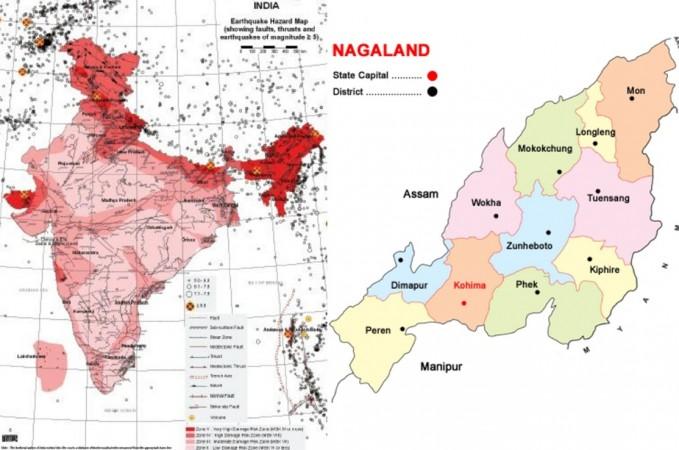Social media may be helpful in disseminating information in everyday life, especially during emergencies, but it has also become the main source of hoaxes, rumours and spam.
Now, a message claiming that an earthquake measuring 8.5 on the Richter scale will hit Nagaland and other Northeastern states of India this month has been shared widely on social media, especially on WhatsApp and Facebook, causing panic among people. And then it has turned out to be a hoax.
"A huge earthquake with a magnitude around 8.5 is predicted to happen in Nagaland and other part of northeast on 29 or 30 August. People have already started building relief camps in Kohima and Mokokchung. Stay alert and stay safe [sic]," reads the text message.
The Nagaland State Disaster Management Authority (NSDMA) has rubbished the rumours, saying some people might have mistaken the upcoming Nagaland Emergency Preparedness Exercise (NEPEx) for an actual earthquake prediction.
It has requested the public "not to pay heed to such rumors but stay alert and vigilant as we work towards a safer and resilient Nagaland."
NSDMA is conducting a state-wide mock drill called NEPEx on Wednesday, August 30, to help in better response to natural disasters and creating awareness among the public.
It has also requested the public "not to panic but co-operate with the authorities for a smooth conduct of the mock exercise."

It may be mentioned here that the National Institute of Disaster Management (NIDM) has said in its Disaster Risk Profile that the entire Himalayan region, where all the Northeastern states of India are located, is "vulnerable to high-intensity earthquakes of a magnitude exceeding 8.0 on the Richter Scale, and in a relatively short span of about 50 years."
Scientific publications have also warned that very severe earthquakes can occur in the region any time.
The Himalayan region has faced four major earthquakes in the past -- Shillong in 1897 (M8.7); Kangra in 1905 (M.8.0), Bihar-Nepal in 1934 (M 8.3) and Assam-Tibet in 1950 (M 8.6).
The fact remains that earthquake can't be predicted. The United States Geological Survey (USGS) has stated on its website that it is unlikely for scientists to be able to predict an earthquake even in future, saying that they have "tried many different ways of predicting earthquakes, but none have been successful."
Going by scientific studies, it is safe to say that all messages predicting time, place, and intensity of an earthquake are a complete hoax and people should avoid spreading it.













